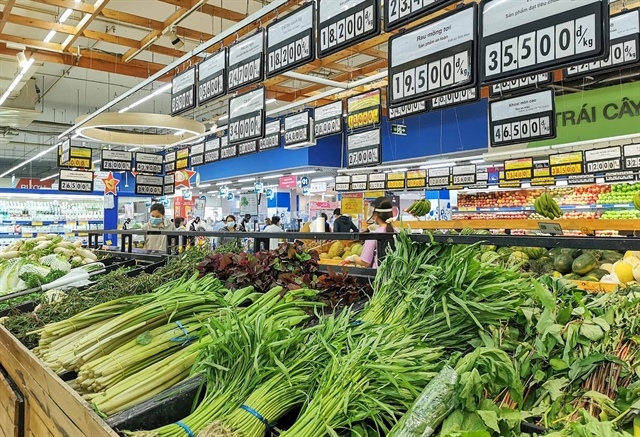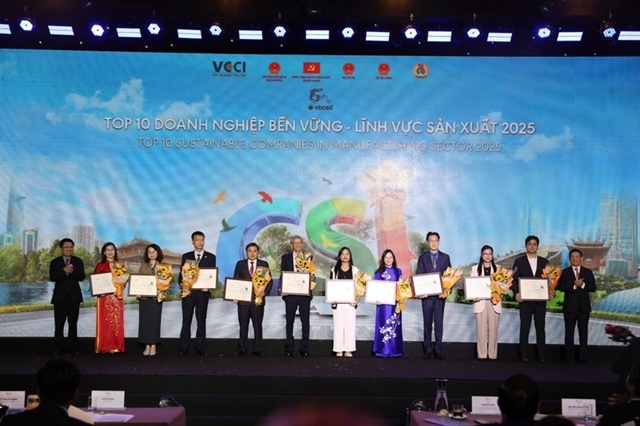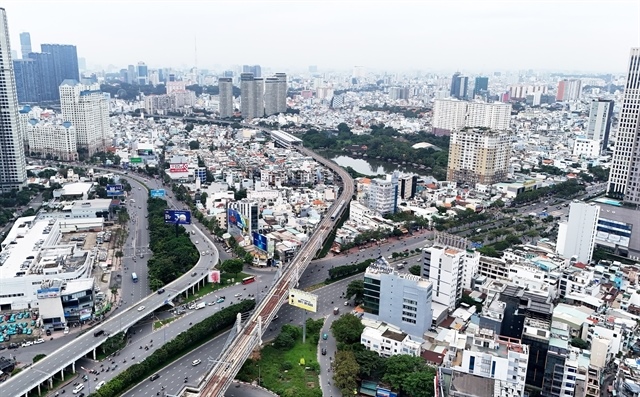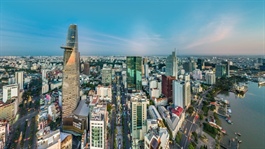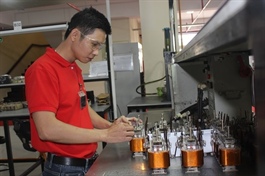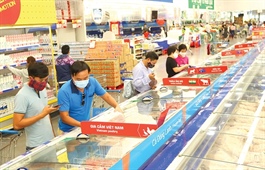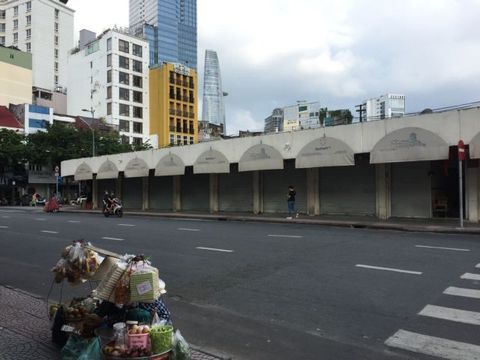Inspiring localities to faster socioeconomic development
Inspiring localities to faster socioeconomic development
The Ministry of Planning and Investment held three online conferences last week on the socioeconomic development and public investment plans, urging localities to become more responsible, united, and sustainable to benefit not only each region but the entire nation.
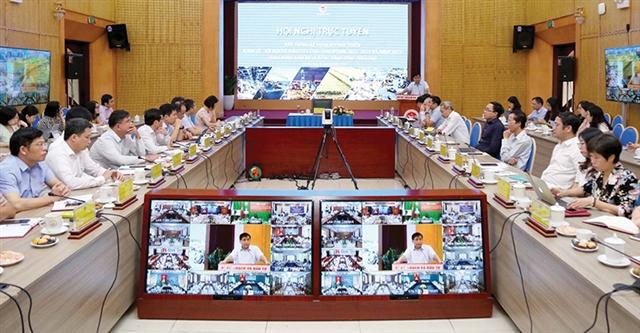
The MPI conferences outlined four key pillars for localities to build development objectives
|
For the 2021-2025 period, the southern province of Ba Ria-Vung Tau has set the overall growth target of 7.6 per cent while aiming for 6.8 per cent right next year, even surpassing its GDP growth of 6.1 per cent between 2016 and 2020. To reach this goal, the province bases its development strategy on the four key pillars of industry, sea trade, tourism, and high technology.
Nguyen Cong Vinh, director of Ba Ria-Vung Tau Department of Planning and Investment, emphasised, “For the province to achieve its ambitions, it would need to focus on its infrastructure, particularly on effectively using the Cai Mep-Thi Vai port complex as National Route 51 is already overloaded.”
He added that the development of the province “would be hampered if Phuoc An Bridge and the Bien Hoa Expressway are not in the focus of the province’s investment strategy for the next period.”
Like most other regions in Vietnam, Ba Ria-Vung Tau has been suffering a blow from COVID-19, in addition to a sharp decline in its revenue from crude oil. Without this important commodity, the province would have become one of the 12 provinces experiencing negative growth in the first six months of this year.
The central city of Danang also took a dent since the new outbreak, which forced it to shut down and apply social distancing measures since July 28. Unsurprisingly, with the pandemic, it is difficult to forecast whether Danang can achieve its socioeconomic development targets for this year and for the 2021-2025 period. It is expected that by the end of the year, the city will not reach most of its important targets.
As of August 15, the total value of public investment disbursement reached VND3.7 trillion ($160 million), only about 49 per cent of the plan. With official development assistance, Danang disbursed only VND230.6 billion ($10 million), 17 per cent of its plan.
Meanwhile, the pandemic has also been the reason for the south-central province of Khanh Hoa’s 11 per cent drop in GRDP, the lowest among the central region. The province’s growth between 2016 and 2020 is expected to only reach 6.1 per cent.
Surprisingly, these numbers do not seem to affect the province’s spirit as it set the GRDP growth target of 7.5 per cent in its development plan during 2021-2025. However, the province also asked the Ministry of Planning and Investment (MPI) for support to propose three important issues to the prime minister.
As such, Khanh Hoa asks for permission to study and propose several policies specific to Van Phong Economic Zone (EZ). In addition, the province would like to see the EZ among the coastal EZs that are prioritised for focused investment, whereby a part of the revenue could be used to supplement infrastructure and site clearance. Lastly, Khanh Hoa suggested adding a Van Phong-South Phu Yen Expressway connection to facilitate regional economic development.
|
Nguyen Chi Dung - Minister of Planning and Investment
With their new plans, localities need to ensure consistency and follow through on the achievements of the previous period. At the same time, they should continue to innovate their approaches and visions for the 2021-2025 period and work out plans that are suitable with each locality’s potentials and advantages. In addition, I urge each province and city to use resources effectively and economically, especially when it comes to land resources and exploitation thereof. Projects that are ineffective and not implemented according to local demand should be withdrawn and their resources should be allocated more efficiently. With regards to public investment planning, localities are asked to clearly define objectives and priorities and to avoid spreading capital too thin right from 2021. Instead, they should balance the capital of the central budget for the entire 2021-2025 period. Priority should also be given to large-scale projects and those that add a driving force and positive spillover effects to the socioeconomic development of the region and the whole country. Lastly, localities should avoid using official development assistance to implement projects that could also be socialised or funded with domestic loans to minimise the country’s debt burden in the future. |
Getting prepared
Currently, each of the country’s 63 cities and provinces is building socioeconomic development plans until 2025. According to Minister of Planning and Investment Nguyen Chi Dung, Vietnam has done a great job in both preventing the spread of the disease and implementing solutions to support domestic businesses and production activities. “Thanks to that, socioeconomic development has been brought back on the course and the economy can steadily move towards a normal state,” the minister added.
Nevertheless, according to the minister, each locality must actively change towards a more holistic top-to-bottom approach while establishing their development plans for the next five years. “Localities must set even higher goals than before on a calculated basis while making use of all their resources and abilities to achieve these,” the minister urged. “For instance, Ba Ria-Vung Tau should aim to effectively promote its essential seaport system for the entire country.”
Climate change has already taken its toll on the Mekong Delta, the literal “rice bowl” of the nation. Together with pollution, it has wreaked havoc on the region’s water supply, resulting in a drastic decrease in farmers’ ability to harvest their crop.
Minister Dung pointed out that for the region to cope, the MPI has already discussed with the Ministry of Transport to complete the North-South Expressway to connect not only Can Tho city but also Ca Mau province in five years. A new vision and a new plan, however, usually go along with a certain investment. “We will strive to devote resources and promote private ones in accordance with the Law on Public-Private Partnership Investment,” he said.
In addition to the 1,900km-long expressway, the MPI also discussed plans with partners to develop a coastal road surrounding the Mekong Delta, thereby creating a driving force for provinces to flourish.
While approaching these issues, Minister Dung emphasised that “the expressway does not just represent a mere road connection but also an economic corridor through which the development of the entire region, including the Mekong Delta, will be boosted. If localities only focus on transportation and do not think further, many opportunities could be lost.”
Although the ministry’s efforts are considerable, many locations have been meeting certain limitations with public investment. Accordingly, deputy director of Bac Giang Department for Planning and Investment Nguyen Cuong asked the MPI to soon propose the PM a decision on principles and criteria for capital allocation for the 2021-2025 period. Cuong also urged that this will be necessary for localities to follow through and lay the foundation for further completing and assigning investment plans.
Cuong also reminded of the need to publish lists of planned programmes, projects, and specific guidelines so that localities can plan to follow the national plan, especially for 2021. At the same time, he suggested that the MPI should ask the PM to allow Bac Giang, together with other provinces, to continue using residual capital of the Urban Development Project along the Mekong Delta region, and work with the Asian Development Bank for loans and extend the loan agreement to further promote its efficiency.
Mutual cooperation
This year, the MPI is in its fourth year of innovating the way regional socioeconomic development and public investment plans are organised, so that localities can improve coordination and information sharing while strengthening their coordination with the ministry to mutually work on effective solutions for each region’s challenges in building and implementing these plans.
MPI Deputy Minister Tran Quoc Phuong commented that the building of development plans has been following the regulations and principles of relevant agencies. “However, issues related to the economic impact of COVID-19 will certainly affect the plans for 2021 and the upcoming five-year period,” he added.
According to Phuong, localities also need to pay attention to price regulations. Following the Law on Statistics, this year will serve as the basis for calculating plans for the upcoming period. “Therefore, I propose additional guidance on calculating the plans for the 2021-2025 period,” he concluded.



